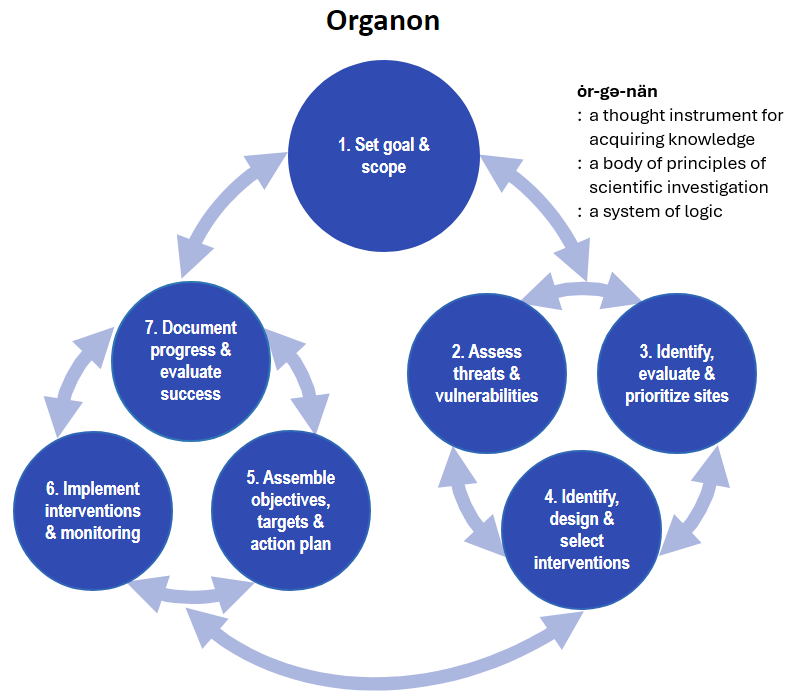About the Adaptation Organon
ȯr-gə-nän
: a thought instrument for acquiring knowledge
: a body of principles of scientific investigation
: a system of logic

The Adaptation Organon (AO) is an instrument for integrating climate adaptation and resilience into natural resource management.
Adaptation refers to adjustment in natural or human systems to a new or changing environment that exploits beneficial opportunities or moderates adverse effects. This is key for maintaining long-term resilience (the ability to tolerate and recover from impacts).
The AO is not just a theoretical concept, but a practical tool. It provides an organizing framework, guiding principles, research examples, and information resources to aid in the planning, designing, and implementing of adaptation actions for resilient natural resources and communities.
What Is the Premise Behind the AO?
Natural resource management aims to protect, restore and conserve functional, resilient, and self-sustaining natural systems. Resilient natural resources ensure the provision of resilient ecosystem services, which in turn safeguard the resilience of human communities and systems.
Boosting resilience depends on:
- understanding vulnerability (the degree of exposure to threats plus the sensitivity and adaptive capacity of the system to resist or recover); and
- creating new management strategies to reduce vulnerability to rapidly changing environmental conditions.
Adaptive management for resilience requires a coordinated flow of information between planning science (Triad 1) and implementation science (Triad 2) to inform continuous evaluation and improvement of management outcomes.

Starting with a clearly defined goal, the AO's double-sided arrows and spinning triads reflect this work's highly fluid and iterative nature, where advances in any one step can power further refinements in any other step. In Triad 1, assessments of vulnerabilities are tailored to inform site evaluation and intervention design, with iterative learning marking the interconnected nature of these steps. The combined information from Triad 1 then informs Triad 2. Here, action planning includes developing monitoring methods to track the implementation of interventions and evaluate success at achieving intended outcomes, which in turn could lead to adjustments in the action plan, again underscoring the interconnected nature of these steps. A project may have multiple iterations of information flow between triads, among steps within triads, and even back to step one for re-evaluation and adjustment of goal and scope.
How Do I Use the AO?
The AO has a variety of uses, from basic orientation and education to program evaluation to highly detailed project planning. Under "Explore the Steps," click on any bubble to see an explanation for that step; within a step, click on any ecosystem example to learn how a research project tackled that step for that system. For program evaluation, use the AO to brainstorm improved adaptation of existing work, what work is already occurring or still needed, and how internal work links together across steps. For detailed project planning, use the AO with a working group of subject matter experts to guide a systematic design process across all steps to achieve a particular program or project goal.
The AO is not meant to be rigid or prescriptive; instead, it is a flexible resource that can be adapted to each project's needs. If a project is already underway, the AO can be used at any step to assess the status of that step and then link it to relevant aspects of other steps in whatever order works best. The step contents are also meant to be used flexibly. Not every element of a step applies in all cases, but some aspect of every step usually will apply. Taking step two as an example, in some cases, a single site may already have been identified for a project; if so, prioritization of that site through some earlier process has already occurred. However, whether one site or many are under consideration, site evaluation will need to be done to understand vulnerabilities before site-specific interventions can be appropriately selected and designed. The "Ecosystem Examples" descriptions illustrate how AO steps apply in different ways to different research projects.
